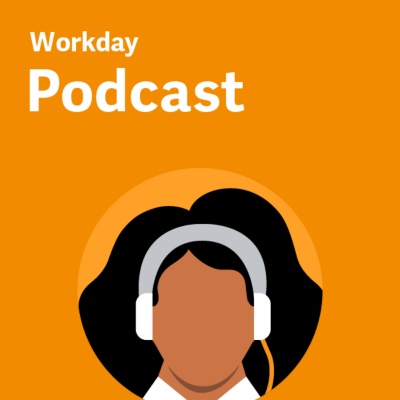Enhancing Human Performance with AI
Get an inside look at how AI is set to revolutionize and elevate human performance without displacing the importance of human involvement.

Get an inside look at how AI is set to revolutionize and elevate human performance without displacing the importance of human involvement.

Stanford professor Erik Brynjolfsson recently implemented an unexpected allowance in his classroom. Now, when completing assignments, students are welcome to rely on artificial intelligence to generate text.
The technology has ballooned in popularity in the last year with the release of applications that can mine publicly available data sources to generate complex content at lightning speed. This ascension has sparked a broader debate about how AI can be utilized ethically across a whole range of use cases, from academia to the enterprise. Brynjolfsson, senior fellow at Stanford’s Institute for Human-Centered Artificial Intelligence (HAI) and director of HAI’s Stanford Digital Economy Lab, argues the answer is not ignoring the new technology. “We can’t freeze in all the things we were doing in the past. The only way to succeed is to embrace it,” he says, “but it can make errors and it’s not perfect. So, we have to adapt accordingly.”
In his classroom, for example, students can’t just input a prompt and expect their computers to do their homework for them. The fact of the matter is, while AI can be an incredible tool for research and content generation, it needs human guidance, editing, and fact-checking.
The same can be said for the technology when deployed for the enterprise. Businesses across a range of sectors are using AI—not to replace employees, but to augment human performance. In fact, according to research by Workday, a full 93% of business leaders believe it is vital for humans to assist AI in decision-making. Put simply, says Jim Stratton, chief technology officer at Workday, AI can create a competitive advantage through speed and efficiency, but the tool is only as good as the people using it.
“Putting the focus on human-machine teaming is incredibly important,” he adds. “There’s this myth that AI is coming to take our jobs, but in reality there’s a huge opportunity to upskill and augment what we do.”
“Rarely do humans or machines alone excel as much as combinations of humans and machines together.”
 Erik Brynjolfsson
Senior Fellow at Stanford’s Institute for Human-Centered Artificial Intelligence (HAI) and Director of HAI’s
Stanford Digital Economy Lab
Erik Brynjolfsson
Senior Fellow at Stanford’s Institute for Human-Centered Artificial Intelligence (HAI) and Director of HAI’s
Stanford Digital Economy Lab
There’s no doubt that businesses are feeling the pressure to adopt AI. According to Workday, 80% of business leaders agree that the technology is required to keep their business competitive, while 94% of respondents have already invested in machine-learning tools. “I think everybody understands now that AI is going to be everywhere, and it is going to fundamentally change how we work and live,” Stratton says.
According to the company’s research, better decision-making, higher levels of productivity, and automating business processes are among the top benefits that respondents expect to see after adopting AI. But there are a few things artificial intelligence does particularly well in these areas. Stratton cited anomaly detection as a specific function where machine learning is providing value in the enterprise today. AI and machine-learning algorithms can analyze large volumes of data quickly and precisely by detecting patterns and surfacing outliers. This means legal and financial professionals, for example, can spend less time poring over each and every contract, and focus on the outliers.
By serving up the right data and recommending to the human where they should focus, the AI is helping the employee work more efficiently and make better decisions. Generative AI, while largely associated with consumer-facing models today, will also bring value to the enterprise in many ways, including content generation, improved search and user experience, summarization, and workflow optimizations. In fact, Workday is building capabilities that leverage generative AI to help customers increase productivity and make fast decisions.
Human oversight is still required for fact-checking and creative problem solving, however. “The system can help you get 80% or 90% of the way there, but then we need to put it into the hands of the users to actually go through and edit what they’re seeing,” Stratton says. “Fine-tune it, make sure it’s safe and free of bias.”
Brynjolfsson has conducted research at Stanford that corroborates this idea on a wider scale. After an in-depth look at 950 occupations, his team concluded that while AI could assist with or even fully automate some day-to-day tasks, each occupation also had some tasks that were best done by humans. What’s more, in a separate research project studying call center operations, he and his co-authors found human operators who are assisted by AI models were more productive and successful than the ones who were not. “Rarely do humans or machines alone excel as much as combinations of humans and machines together,” Brynjolfsson says.
“There’s this myth that AI is coming to take our jobs, but in reality there’s a huge opportunity to upskill and augment what we do.”
 Jim Stratton
Chief Technology Officer
Workday
Jim Stratton
Chief Technology Officer
Workday
According to Workday research, only 29% of business leaders are very confident AI and machine learning are being used ethically, and 48% cite security and privacy concerns as the main barriers to implementation. Their concerns have some merit, but getting left behind in digital transformation presents real risk.
Instead, business leaders can eschew that risk by taking a responsible approach to AI. For Workday, a big part of that mission is deliberately building machine-learning solutions to amplify human potential instead of replacing it. “Ethical AI principles guide our entire machine-learning development approach,” Stratton says. “We employ a very rigorous process for how we build these tools, how we deploy them, and how we oversee them on an ongoing basis.”
As it happens, the ethical approach can pay dividends for businesses and their workforces. “There’s a huge amount of potential for AI to make it easier for us to be more creative and efficient,” he says. In the end, it’s the human and machine team that may represent the true future of work.
More Reading

How can leaders keep their organizations agile via digital transformation? Vanderbilt University Medical Center’s Laura Bagus, chief technology officer, and Chuck Thresher, Workday ERP coordination director, discuss their approach.

State and local governments are typically risk averse. However, when organizations assess risk and take action, it can pave the way for major IT modernization. Sixteen public sector CIOs share their perspectives.

How does AI technology help foster a more human-centric future of work? Workday leaders Dave Wachtel and Kathy Pham join Steve Boese and Trish Steed to discuss AI’s impact on HR on a special episode of the HR Happy Hour podcast series, recorded on the Workday Forever Forward bus.